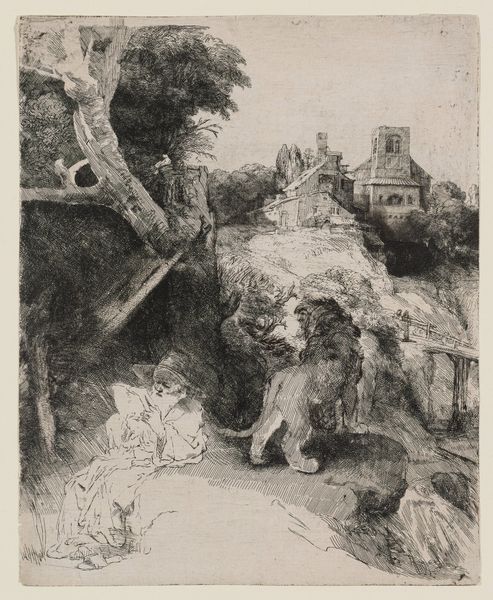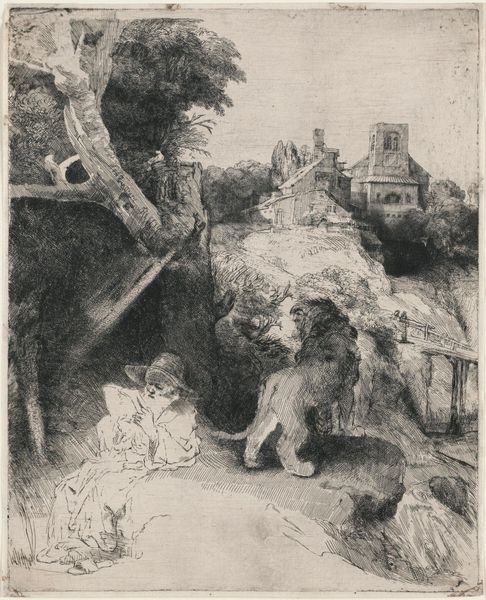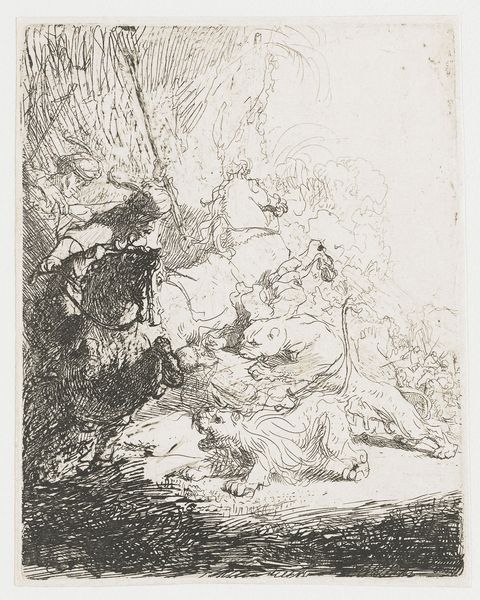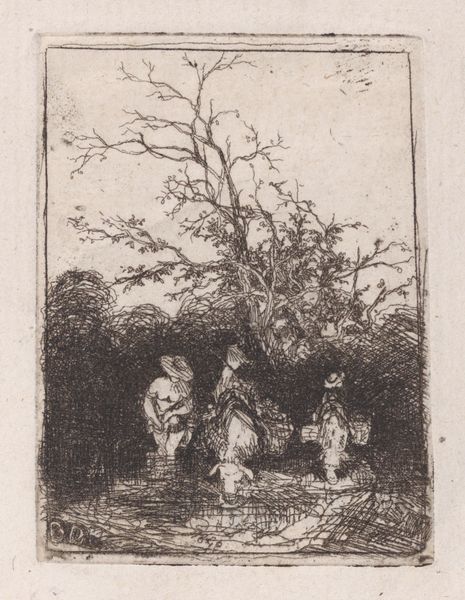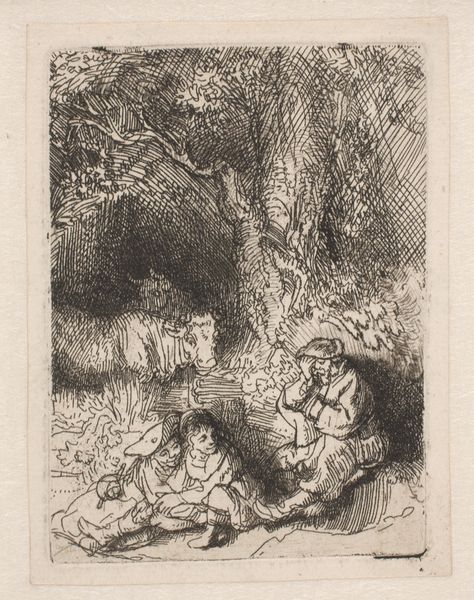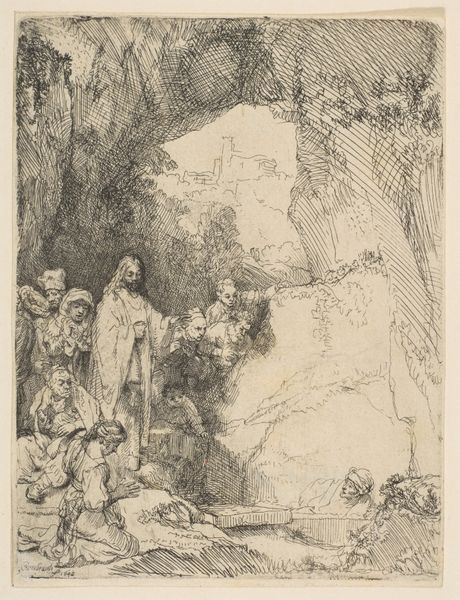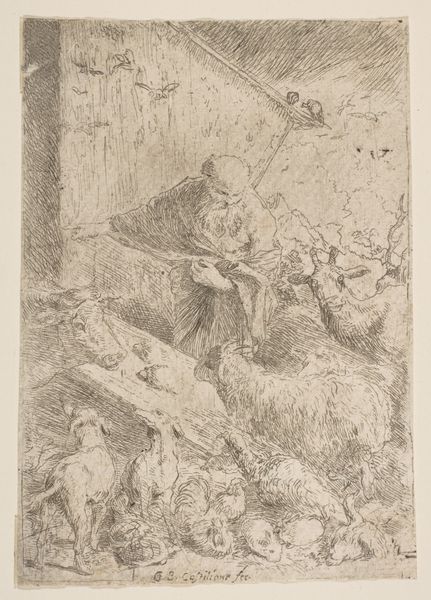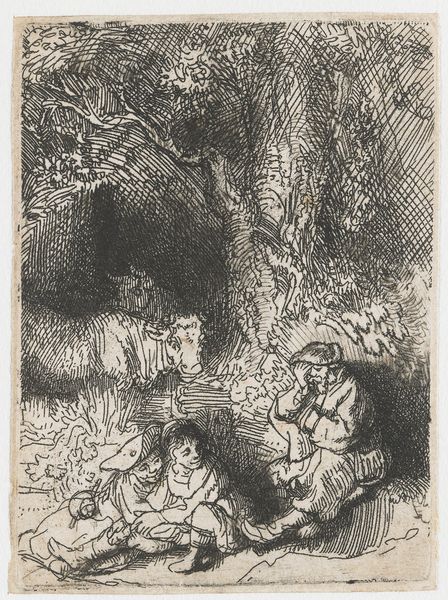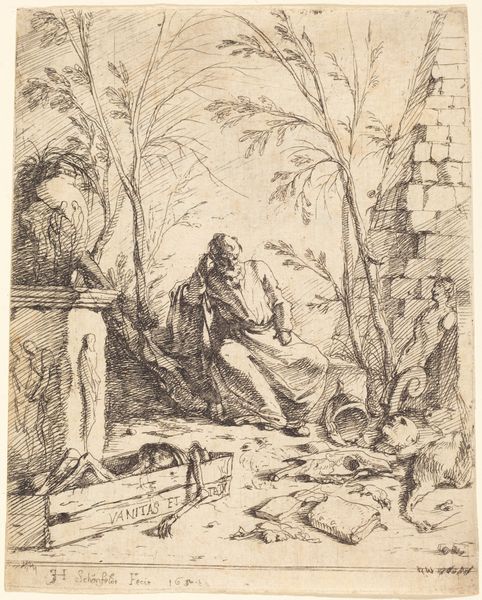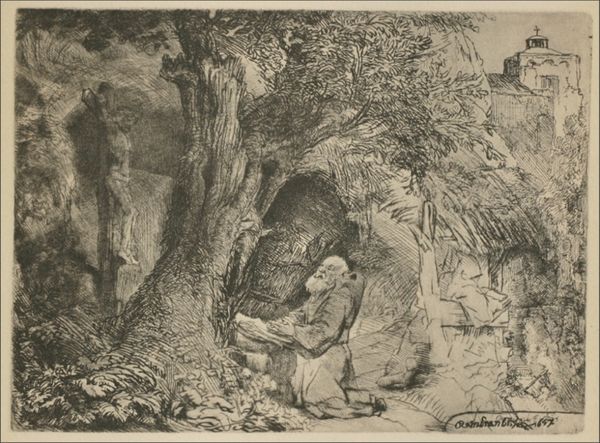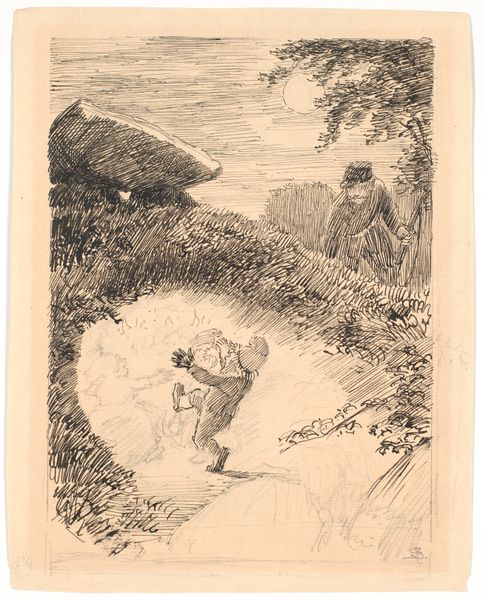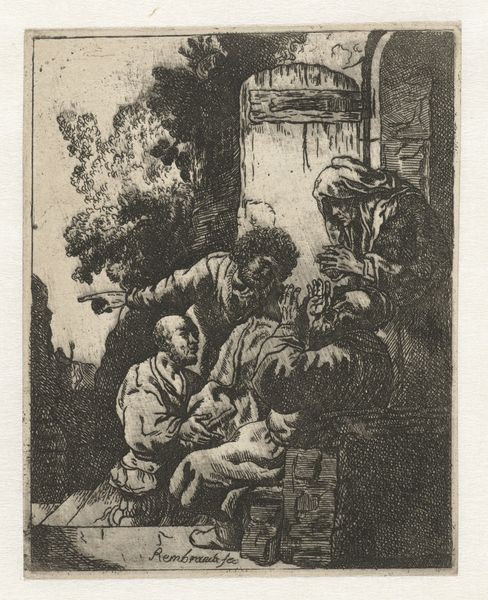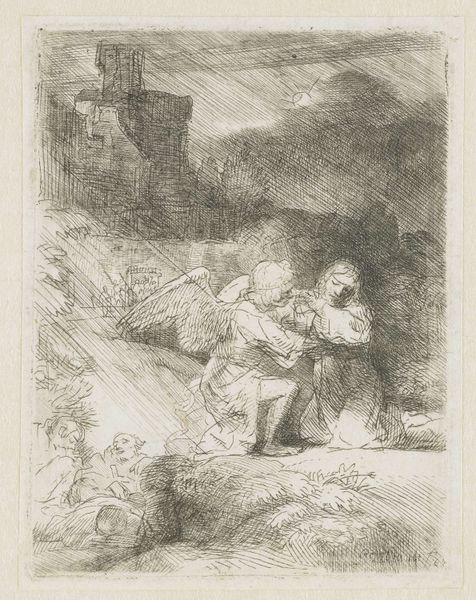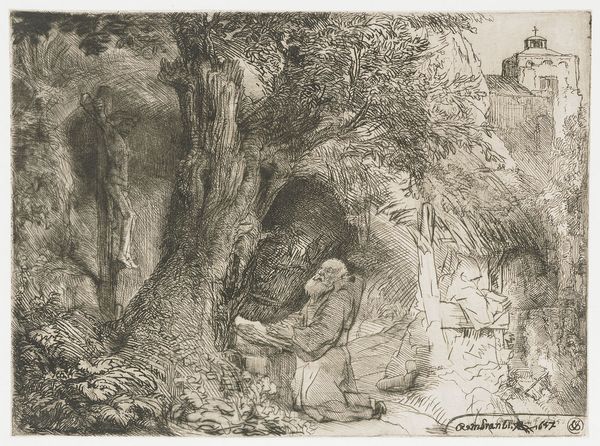
St. Jerome Reading in an Italian Landscape 1648 - 1658
0:00
0:00
drawing, print, etching
#
drawing
#
baroque
# print
#
etching
#
landscape
#
building
Dimensions: plate: 10 3/16 x 8 1/4 in. (25.9 x 21 cm)
Copyright: Public Domain
Curator: Here we have Rembrandt van Rijn’s "St. Jerome Reading in an Italian Landscape," an etching and drypoint likely created between 1648 and 1658. What strikes you first? Editor: Immediately, the image exudes an aura of quietude despite the fairly dense mark-making. The textures seem so rich – you can almost feel the roughness of the landscape around Saint Jerome. Curator: Indeed! Note Rembrandt's manipulation of the etching process. The varying densities of lines to create light and shadow...it speaks to both skill and material knowledge. But let's focus on Jerome for a moment. To me, his lion companion is a particularly loaded symbol. Editor: Ah, yes, the lion, a frequent attribute! It’s interesting because Saint Jerome, though often depicted in scholarly settings, is heavily associated with translation, specifically translating the Bible into Latin. Curator: So the act of making is key even in interpreting subject matter, in some ways. And here, the print medium adds a layer of accessibility through the potential for wider distribution, contrasting with, say, a unique oil painting. Editor: I agree, and I find it remarkable how Rembrandt infuses this sacred scene with an earthy reality. He wasn't idealizing, it seems. Curator: Consider the specific choices in composition—the humble dwelling elevated slightly on the hill, the gnarled tree framing Jerome... They all ground this biblical figure in a palpable, lived reality. How does the imagery inform this? Editor: It’s a powerful visual declaration – scholarship, holiness, intertwined with the everyday grind. What I take away, in light of the lion and Jerome, is a reminder of the labour needed to bridge language gaps, belief systems. To forge shared understanding through texts, interpretations and visual art such as these. Curator: And that’s so essential to remember. Editor: Absolutely, so much context condensed through process and material.
Comments
No comments
Be the first to comment and join the conversation on the ultimate creative platform.
